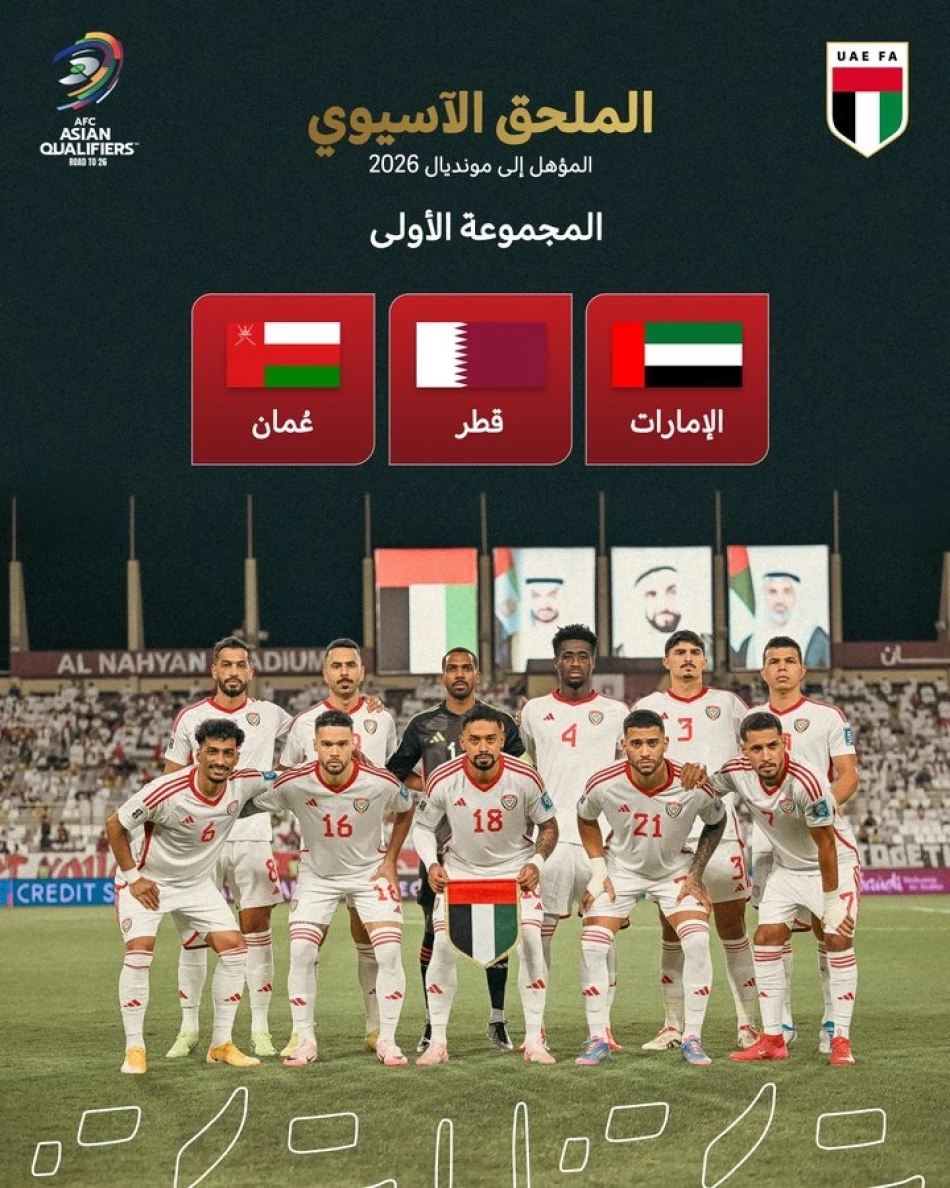
2026 World Cup Playoff Draw: UAE, Qatar, and Oman Clash in Group Stage
UAE Faces Gulf Rivals Qatar and Oman in Crucial 2026 World Cup Playoff Draw
The UAE national football team has been drawn alongside Qatar and Oman in Group 1 of the Asian World Cup qualifiers playoff, setting up a high-stakes Gulf showdown for one of the final spots at the 2026 tournament. The draw, conducted Thursday at the Asian Football Confederation headquarters in Kuala Lumpur, creates an intriguing regional rivalry that could determine which nations join the expanded 48-team World Cup field.
Tournament Structure Favors Strong Finishers
The six teams that secured third and fourth places in their respective qualifying groups—UAE, Qatar, Saudi Arabia, Iraq, Oman, and Indonesia—have been split into two groups of three. Group 2 features Saudi Arabia, Iraq, and Indonesia, creating a compelling contrast between the Gulf-heavy Group 1 and the more geographically diverse second group.
The playoff format, scheduled for October 8-14, follows a single-round robin system within each group. The top finisher from each group earns direct qualification to the 2026 World Cup, while the second-place teams will face off in a two-legged playoff on November 13 and 18 to determine Asia's representative in the intercontinental playoff.
UAE's Second Chance at World Cup Glory
For the UAE, this playoff represents a critical opportunity to reach only their second World Cup finals, following their debut appearance in 1990. The Emirates squad will be eager to capitalize on this second chance after squandering direct qualification from the third round, where they finished third in their group behind automatic qualifiers.
The team's recent qualifying campaign highlighted both promise and inconsistency—traits that could prove decisive in the condensed playoff format. Unlike the extended qualifying rounds, teams will have little margin for error in the concentrated October window.
Regional Dynamics and Tournament Implications
The draw's regional clustering creates fascinating subplot narratives. Qatar, as 2022 World Cup hosts and current Asian champions, enters as the highest-ranked team in Group 1 according to FIFA's June 13 rankings. This seeding system placed Qatar and Saudi Arabia in Pot 1, UAE and Iraq in Pot 2, and Oman and Indonesia in Pot 3.
The Gulf rivalry aspect adds extra intensity, as these nations regularly compete in regional tournaments and share similar playing styles and tactical approaches. Qatar's recent international experience, including their home World Cup and Asian Cup victory, may provide a psychological edge.
Expanded World Cup Creates New Opportunities
The 2026 World Cup's expansion to 48 teams has created additional pathways for Asian nations, with the continent now allocated 8.5 spots compared to the previous 4.5. This expansion has intensified competition among traditional regional powers and emerging nations like Indonesia, which has invested heavily in football development.
The playoff venues in Qatar and Saudi Arabia could influence group dynamics, particularly if Qatar leverages home advantage effectively. The concentrated tournament format, held in established football infrastructure, should ensure high-quality playing conditions crucial for determining World Cup qualification.
With UAE's administrative team member Ismail Rashid attending the draw ceremony, the Emirates federation appears committed to maximizing this qualification opportunity. The October playoffs will ultimately determine whether the UAE can end their 36-year World Cup absence and join the global football showcase alongside their Gulf neighbors.
Most Viewed News

 Sara Khaled
Sara Khaled






